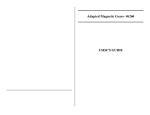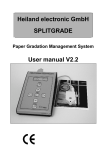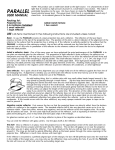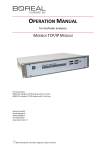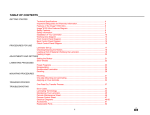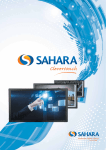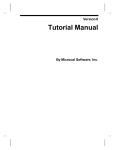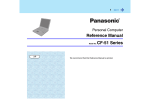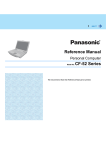Download Bluetooth Enlarging Meter User Manual
Transcript
Bluetooth Enlarging Meter User Manual LightScaler.Com Version 1.0 Table of Contents 1. Introduction ................................................................................................................. 2 I. II. Bluetooth Enlarging Meter Overview ......................................................................... 2 What’s Included In the Package? .................................................................................. 3 2. Setting Up Your Bluetooth Enlarging Meter & App ......................................... 4 I. Android Device Pre-requisites ...................................................................................... 4 II. Install the Enlarging Meter App on Your Android Device ................................... 4 III. Install Battery On The Bluetooth Enlarging Meter ................................................ 4 IV. Pair The Bluetooth Enlarging Meter to the Android Device For The First Time.................................................................................................................................................. 4 3. Using Your Bluetooth Enlarging Meter ............................................................... 6 I. Determining Paper Grade and F-Stop Differences ................................................. 6 Creating a New Session........................................................................................................................ 6 Metering the Projected Image on the Easel................................................................................. 7 Interpreting the Data ............................................................................................................................ 8 Changing the Reference Point ........................................................................................................... 9 Renaming the Data ................................................................................................................................ 9 Deleting the Data .................................................................................................................................... 9 Saving the Session.................................................................................................................................. 9 Exiting the Session ................................................................................................................................. 9 Continue Metering From A Previously Saved Session ......................................................... 10 Viewing An Existing Session ........................................................................................................... 10 Battery Saving Feature...................................................................................................................... 10 II. Achieving a Specific Reference Tone.........................................................................11 Creating a New Session..................................................................................................................... 11 Capturing Reference Tone Information ..................................................................................... 13 Reproducing the Reference Tone ................................................................................................. 13 Other Options........................................................................................................................................ 14 1. Introduction Thank you for your interest in the Bluetooth Enlarging Meter by LightScaler! This is a first of its kind enlarging meter that uses wireless Bluetooth technology to pair with your Android device. To be used in a traditional black and white darkroom, the meter allows you to measure light from various spots of the projected image on the easel. Using data captured from the meter, the associated Android app then presents useful information for you to make better decision in the printing process, resulting in higher quality prints. I. Bluetooth Enlarging Meter Overview Components of the Bluetooth Enlarging Meter: A. B. C. D. Photodiode with IR Filter Press-to-Meter button Red LED Status Indicator Power on/off Button Copyright © 2015 LightScaler. All Rights Reserved. 2 II. What’s Included In the Package? You will receive in your package the following items : • • 1 Bluetooth Enlarging Meter (battery is not included) 1 piece of 3” x 6” of red safety filter Copyright © 2015 LightScaler. All Rights Reserved. 3 2. Setting Up Your Bluetooth Enlarging Meter & App I. Android Device Pre-requisites Your Android device must be at least at version 2.2.3 and supports Bluetooth version 2.0 and above in order for the associated Enlarging Meter App to work with the Bluetooth Enlarging Meter. II. Install the Enlarging Meter App on Your Android Device a. Go to Google Play Store on your Android device b. Search for Bluetooth Enlarging Meter c. Install the Enlarging Meter App onto your device III. Install Battery On The Bluetooth Enlarging Meter The Bluetooth Enlarging Meter uses one AAA battery. To install a new battery: a. Turn off the Bluetooth Enlarging Meter b. Use a #0 Philips screwdriver to remove the 4 screws located on the back of the Bluetooth Enlarging Meter c. Separate the top compartment from the bottom compartment. The battery holder is located with the top compartment. d. Remove the old battery, if any, from the battery holder e. Insert the new battery onto the battery holder f. Turn on the Bluetooth Enlarging Meter g. The red LED on the meter would start blinking h. Turn off the Bluetooth Enlarging Meter i. Assemble the top and bottom compartments of the Bluetooth Enlarging Meter & put back the 4 screws to secure the assembly IV. Pair The Bluetooth Enlarging Meter to the Android Device For The First Time The Bluetooth Enlarging Meter needs to be successfully paired to your Android device the first time before it can be used with the app. The steps below shows a typical way to pair the Bluetooth Enlarging Meter to your Android device. Please refer to your device’s instruction manual should the steps below are different Step 1 - Enable Bluetooth functionality on your Android device a. From the main screen, tap Application tab. b. Tap Settings c. Tap Wireless & Networks d. Tap Bluetooth settings e. Tap Bluetooth to turn on Bluetooth f. Tap Search for devices Your Android device will start scanning for Bluetooth devices within range Copyright © 2015 LightScaler. All Rights Reserved. 4 Step 2 – Power on your Bluetooth Enlarging Meter The red LED on the meter will start blinking. Step 3 – Pair your Android device with your Bluetooth Enlarging Meter a. Once detected, tap on “LightScaler” b. Enter 1234 c. Tap the OK d. The Android device will display the Bluetooth Enlarging Meter’s status as paired once the pairing is successful You can turn off the Bluetooth Enlarging Meter once it is successfully paired with your Android device. Copyright © 2015 LightScaler. All Rights Reserved. 5 3. Using Your Bluetooth Enlarging Meter Before using the Android device in the darkroom, please ensure it is paper safe by placing a piece of red safety filter over its screen. I. Determining Paper Grade and F-Stop Differences The Enlarging Meter app allows you to measure up to 30 spots on the projected image of negative, and compares these values against each other. By comparing the darkest shadows and the brightest highlights on your negatives, you will be able to determine the optimal paper grade for your prints. Knowing the f-stop differences between two spots on your negative would allow you to determine how much to dodge or burn Creating a New Session 1. Set up your negative on your enlarger and project it onto your easel as you usually do during printing 2. Turn on your Bluetooth Enlarging Meter. The red LED will start blinking 3. Start up the Enlarging Meter app on your Android device 4. Tap on “Contrast Metering” button 5. A listing of previous saved sessions, if any, is shown. To start a new session, tap on the “+” symbol on the top right corner. 6. Type in the name of the session (up to 20 characters) and tap OK 7. Tap on Yes to enable the Bluetooth on your Android device 8. Upon successful pairing, the red LED on the meter will be permanently lighted on without blinking Copyright © 2015 LightScaler. All Rights Reserved. 6 9. On the app, you will see 3 tabs a. “Setup” tab Allows you to enter information relating to the setup of this session: Enlarger model & lens used, Negative used and any additional notes you would like to keep for the session. b. “Data” tab A scrollable list of data consisting of a name, range number and f-stop differences displayed in the order captured by the Bluetooth Enlarging Meter. More about this later c. “Pic” tab Meant for you to keep a record of the photograph used in this session. A camera icon is displayed when no image is recorded yet. To take a picture with the camera on the Android device, tap on the camera icon. If a photograph is already recorded, by tapping on the screen and holding, you can: i. View the photograph with another app ii. Re-take a photograph iii. Delete the photograph To move between tabs, swipe on the screen or tap on the tab to get to the desired tab 10. Tap on the diskette icon to save the session or “X” to exit without saving the session 11. To review sessions in future, you can just tap on the session name listed on the list. Metering the Projected Image on the Easel 1. When the Bluetooth Enlarging Meter is successful paired to the Android app, the red LED on the meter will be lighted on (not blinking). 2. Position the meter to the spot on projected image where you would like to measure. 3. Press the button on the meter. An “open shutter” sound from the Android device will be heard. The LED on the Bluetooth Enlarging Meter will turn off for a few seconds. 4. When successfully metered, a “closed shutter” click from the Android device will be heard. The information will be updated and displayed on the “Data” tab. Each data captured would, by default, be named sequentially from “LightValue_1”, “LightValue_2”, “LightValue_3”, and so on 5. If the light value is out of range (too bright or too dark), a beep would be sounded. The Data tab will not be updated. Copyright © 2015 LightScaler. All Rights Reserved. 7 6. Repeat steps 2 and 3 to capture other points of interest on the projected image. You can meter up to 30 readings for each session. Interpreting the Data Useful information is displayed when you have two or more good readings from the meter. The app will use the first data point as the reference point. Subsequent data point(s) would be compared to this reference point to tell you their range number and f-stop differences. On the Data tab, you will find the following: a. Reference point. In the screen shot above, this is “Reference : LightValue_1”. This means data of LightValue_1 is the reference point for other metered readings in the session b. A scrollable list of data based on measurements taken from the Bluetooth Enlarging Meter. The data is listed in the same order the metering was done. Each set of data on the list consists of : i. Label Name of the data point. By default, it is labeled “LightValue_1” for 1st reading, “LightValue_2” for 2nd reading, and so on. You can rename the labels to better reflect the metered spots. ii. Range Number The letters RN stand for Range Number. When the Bluetooth Enlarging Meter is used to measure the highlight and the shadow areas of your image, this Range Number can be used to determine which paper grade to use for your print. Copyright © 2015 LightScaler. All Rights Reserved. 8 For example, if RN is 80, that means you’ll need a grade 3 paper, or a VC filter that would give you a grade 3 contrast. You can refer to the manufacturer’s datasheet to determine which VC filter to use. Below is an example for Ilford Multigrade IV FB Fiber paper. Filter RN iii. 00 170 0 150 1 130 2 100 3 80 4 60 5 40 F-Stop difference from the reference point Difference in f-stop, in up to 2 decimal points and in the nearest 1/12th stop. A negative number means that the printed image of this spot is darker than the reference spot by the f-stop indicated. Vice versa if the number is positive. Knowing the f-stop difference can aid you in deciding how much to dodge or burn relative to the reference point Changing the Reference Point Tap on item on the list and that item becomes the reference point. All data on the list will be recomputed against the new reference point. Renaming the Data Instead of using the default labels such as “LightValue_1”, you can rename it with something informative to describe the spot metered, such as “Left Eye” or “Right Pupil”. Tap and hold on the item, select “Rename Label” and type the desired name. Deleting the Data Tap and hold on the item, and select “Delete Data Point”. You will be asked to reconfirm this operation before the data gets deleted permanently. If this data is the existing reference point, the first data on the list after the delete operation will become the new reference point Saving the Session Tap on the floppy disk icon located on the top right corner of the Android app Exiting the Session Tap on the “X” icon located on the top right corner of the Android app. You can also use the back key of the device. The app will prompt you to save the session if not already saved. Copyright © 2015 LightScaler. All Rights Reserved. 9 Continue Metering From A Previously Saved Session a. Turn on your Bluetooth Enlarging Meter. The LED on the meter will start blinking b. From the list of saved sessions, tap on the desired session and hold c. Tap “Connect With Meter” d. Tap “Yes’ when the Android app ask for permission to turn on Bluetooth e. The LED on the Bluetooth Enlarging Meter will stop blinking and turn permanently on upon successful pairing. f. You will see information related to your session displayed on the Android app g. You can start metering the projected image as described earlier Viewing An Existing Session Tap on the desired session from the list. Information from the session is displayed. You can do all the operations described above except adding new data. Battery Saving Feature The Bluetooth Enlarging Meter will be suspended when not used for more than 5 minutes. The red LED would also be turned off. This feature would prolong battery life. To turn it back on, press the meter button. You will need to re-connect the app with the meter again. Copyright © 2015 LightScaler. All Rights Reserved. 10 II. Achieving a Specific Reference Tone The Bluetooth Enlarging Meter can also be used to calculate the exposure time needed to achieve a specific reference tone for your negative. This reference tone can be a highlight, facial tone or darkest-detailed shadow. Information about this reference tone is first captured and stored onto the Android app. The information includes the enlarger type, lens, paper developer, the dilution, paper used, VC filter grade, light as measured by the Bluetooth Enlarging Meter and the paper exposure time. When you want to achieve this reference tone with another negative, you place the Bluetooth Enlarging Meter on the desired spot of the projected image and with the light value captured, the Enlarging Meter app will calculate the exposure time needed. Creating a New Session 1. Set up your negative on your enlarger and project it onto your easel as you usually do during printing 2. Turn on your Bluetooth Enlarging Meter. The meter’s LED will start blinking 3. Start up the Enlarging Meter app on your Android device 4. Tap on “Tone Metering” button 5. A listing of previous saved sessions, if any, is shown. Tap on the “+” symbol on the top right corner to start a new session 6. Type in the name of the session (up to 20 characters) and tap OK 7. Tap on Yes to enable the Bluetooth on your Android device 8. Upon successful pairing, the meter’s LED will be permanently lighted on without blinking 9. On the app, you will see 3 tabs Copyright © 2015 LightScaler. All Rights Reserved. 11 a. “Setup” tab Allows you to store information relating to the setup of this session: Enlarger model & lens, paper developer, dilution, paper used, and any additional notes b. “Data” tab A scrollable list of VC filter grades sequencing from #00 to #5 in half grade. Each grade has 3 states represented by the following icons : i. Question Mark Icon : Nothing has been captured ii. Clock Icon : Light data has been captured. No paper exposure time entered yet. iii. Thumbs Up Icon : Light and exposure time data have been captured for this grade c. “Pic” tab Allows you to keep a record of the photograph used in the session. A camera icon is displayed when no image is recorded yet. To take a picture with the camera on the Android device, tap on the camera icon. If a photograph is already captured, by tapping on the screen and holding, you can: i. View the photograph with another app ii. Re-take a photograph iii. Delete the photograph To move between tabs, swipe on the screen or tap on the tab to get to the desired tab 10. Tap on the diskette icon to save the session or “X” to exit without saving the session Copyright © 2015 LightScaler. All Rights Reserved. 12 11. To review sessions in future, you can just tap on the session name listed on the list. Capturing Reference Tone Information 1. When the Bluetooth Enlarging Meter is successful paired to the Android app, the meter’s LED will be lighted on (not blinking). 2. Move to the “Data” tab on the app. 3. You will see a scrollable list of VC filter grade from #00 to #5 in 0.5 steps. A question mark icon and a time of “0.00 sec” would accompany each grade. 4. Tap on the VC filter grade used in your present setup, eg #3. The message “Position Meter and Press Button to Measure Light Value” would pop up on the screen. 5. Position the meter to the spot on projected image on the easel & press the button on the meter. An “open shutter” click would be sounded by the Android device. The LED will turn off for a few seconds. 6. When successfully metered, you will hear a “shutter closed” click from the Android device. A message “Grade #3 Metered!” pops up on the screen. The Question Mark icon would now change to the Clock icon. 7. Next, you enter the paper time exposure used to create the reference tone. Tap on the grade metered. Enter the time (up to hundredths of a second) on the pop up and tap “OK”. 8. The Clock icon changes to the Thumbs Up icon. The reference tone information for this grade is now complete. 9. Complete the information on the “Setup” tab and create an image record of the reference tone on the “Pic” tab as needed. 10. Tap on the diskette icon to save the session. 11. Tap on the “X” icon or the device back key to exit the session. Reproducing the Reference Tone 1. Setup your negative in your darkroom. 2. Switch on your Bluetooth Enlarging Meter. The LED on the meter will start blinking. 3. Tap “Tone Metering” on the Android app. 4. Tap and hold the session name that contains the reference tone information. Select “Turn Meter On” from the pop up list. The LED will stay on once successfully paired. 5. Check that the icon on the filter grade you are using now is a “Thumbs Up” icon. Tap on the item, eg “Grade #3”. The message “Position Meter and Press Button to Measure Light Value” would pop up on the screen. 6. Position the meter to the spot on projected image on the easel & press the button on the meter. An “open shutter” click would be heard on the Android device. The meter’s LED will turn off for a few seconds. 7. When successfully metered, you will hear a “closed shutter” click from the Android device. A message would appear, for example: Copyright © 2015 LightScaler. All Rights Reserved. 13 “Grade #3, Ref Time : 9.99 sec” “Calculated Time : 12.87 sec” 8. The calculated time of 12.87 sec is the time you would expose that spot to achieve the same tone as your reference tone. 9. To determine the exposure time of another spot, repeat steps 6-8. 10. Tap on the back key of your Android device when you are done. Other Options If you tap and hold on the Clock icon or the “Thumb Up” icon, a list of actions will pop up on the screen. The actions are : 1. Update Time : Enter the paper exposure time 2. Reset Time : Reset the paper exposure time to 0.00 sec 3. Reset Light & Time : Reset the light value and paper exposure time of the selected grade Copyright © 2015 LightScaler. All Rights Reserved. 14
















